How to Measure the Clock Signal Output By a Microcontroller Circuit
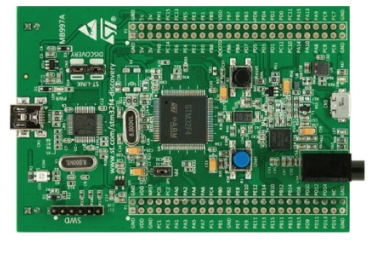
In this article, we go over how to measure the clock signal output by a microcontroller circuit.
So if you work with microcontrollers, then you know they utilize clocks for operation.
They use clocks for thing such as system operation to creating time delays for circuits that need them to creatingg signals for pulse width modulation.
So clocks are vital when working with microcontrollers and embedded proggramming.
So at times we want to make sure that we're working with the right clock signal and we want to be able to measure this output clock signal so that our circuit works well.
Clock configuration is very dynamic with microcontrollers.
Clocks can be configured internal to the microcontroller, where they use components internally on the board to create the clock signal or they can be configured by adding external components such as cyrstal oscillators to the board.
They can be high speed or low speed.
Clock signals can be prescaled down to lesser frequencies or when working with phase locked loops, they can be multiplied to create a clock signal with a greater frequency than the originating frequency.
So clock configuration is very dynamic and you can see the importance of being able to measure this signal to see what you're receiving as output.
So in order to be able to measure the clocks signal output by a microcontroller, you need to use a dedicated pin on the microcontroller that allows for the clock signal to be output.
This pin on a microcontroller is called the microcontroller clock output pin (MCO).
By doing the correct setup and configuration in software, we can output the clock signal from our circuit and proram onto this pin.
We then can take an oscilloscope or logic analyzer and measure this clock signal at this output pin.
In this article, we cannot go over each type of microcontroller that there is. So we just take one microcontroller and demonstrate how this works. You then can have an idea of how this works with this microcontroller, of which you can do research and apply to other microcontrollers.
The microcontroller we will use in this circuit is the STM32F407 discvoery board.
The STM32F407 discovery board has 2 microcontroller clock output (MCO) pins.
These 2 MCO pins function to output a clock signal, which can then be measured by an oscilloscope or logic analyzer.
As stated earlier, the clock signal output from MCO pin can be from a variety of sources, including from HSI (high-speed internal clock), LSE (low-speed external clock), HSE (high-speed external clock), or a PLL (phase locked loop).
The different MCO pins on a microcontroller may work with different clock sinals.
It's highly specific to te microcontroller board you are workin wit h, so yuou would need to obtain and review the dataseet for te specific microcontroller you are workin wit.
Specifically, wit te STM32F407G discvoery board, tere are 2 MCO pins, MCO1 and MCO2.
The MCO1 pin can ouput a clock signal either from the HSI (high-speed internal clock), LSE (low-speed external clock), HSE (high-speed external clock), or a PLL (phase locked loop).
The MCO2 pin can output a clock signal either from the HSE clock, PLL clock, system clock (SYSCLK), or PLLI2S clock.
Below is the clock tree for te STM32F407G discvoovery baord.
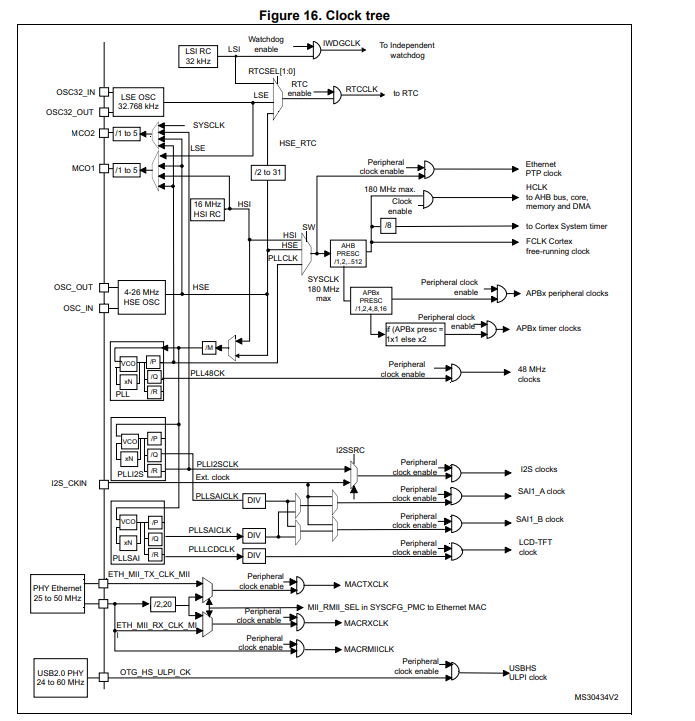
So, through this clock tree, you can get an idea of the MCOs available. Above you see that the 2 microcontroller clock output (MCO) pins are pins, MCO1 and MCO2. And you get an idea of the clock signals that can be output through them, along with things such as the prescalers.
Above you see that if we use the HSI clock without any prescaling or modification to the original signal, it will give us an output clock signal frequency of 16MHz.
So to make our program as simple as possible, we won't apply any modification to the original high speed internal (HSI) clock
signal, leaving it at 16MHz. We will then output this signal through the MCO1 pin, which on the STM32F407G discovery board is pin 8 of GPIO
PORTA.
There are a number of steps that need to be done to make this clock output signal occur.
First, we must configure the RCC Clock Configuration Register to select the HSI clock to be output from the MCO1 pin.
Then we must enable the periperal clock for the peripheral register GPIO PORTA, since we are outputting the clock signal from pin PA8.
Then we must configure pin PA8 to be in alternate function mode, so that it can act as a MCO pin.
We then set pin PA8 to mode 0 in the alternate function high register.
At the end of this, we should be able to read and measure a 16MHz signal from pin 8 of GPIO PORTA.
Before we explain the code, let us just look first at the clock-out capability of the MC0 pins.
This is shown below in the clock-out capability of the MCO pins in the datasheet, which you can find at the following
link: STM32F4xx Datasheet.
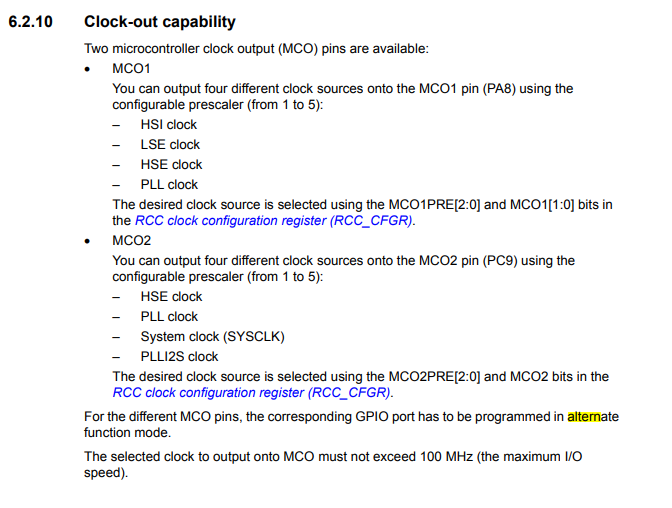
We can see that for this MCO pin, MC01, that we are working with, we can output a clock signal from HSI, LSE, HSE, and PLL clock signals.
In this case, we will be doing so with an HSI clock signal, which is internal to the microcontroller.
We now will explain the code.
At the top of our code, we include the Next, we have several macros defined which define the addresses of memory mapped devices such as clocks
and general purpose I/O ports (PORTA in this case). We will go over these more.
So within our main function, we first define the RCC Clock Configuration Register (RCC_CFGR).
This register allows us to select the type of clock we want to use for the microcontroller and where we want to output the signal
from.
So looking at the RCC clock configuration register above, in order to output a
HSE signal from the MCO1 pin, we need to set bits 21 and 22 to 00. This is how we can get the HSE signal
to output from pin 8 of GPIO PORTA, which is MC01 when the pin is in alternate function mode.
So the first thing you have to do with any register is to assign it an address, so that
the program knows which register you are referencing.
The address of the RCC clock configuration register is the base address of the RCC
clock register plus the offset of the RCC clock configuration register, which is 0x08
We then clear bits 21 and 22 in order to output a HSE clock signal from the MCO1 pin.
Next we must enable and turn on the peripheral clock for the GPIO PORTA register. This is
the register that contains the MCO1 pin, which is pin 8.
In order to enable the peripheral clock for GPIO PORTA, we use the base address of the
GPIO PORTA register plus the offset of the RCC AHB1 bus; this is the bus that is connected to GPIO PORTA.
When enabling peripheral registers, you get the base address of that address plus the offset
of the bus it is connected to.
Below is the RCC AHB1 peripheral clock enable register.
Looking at the RCC AHB1 peripheral clock register, we see that this register has an
address offset of 0x30. What this means is that we have to add the base address of RCC to this address offset of
0x30. This gives us a result of, 0x4002 3800 + 0x30
This address gives us the address for the RCC AHB1 peripheral clock register, which is the
register that allows us to work with the GPIOA and GPIOD ports.
A bus, such as the AHB1 bus, is connected to multiple registers, such as other GPIO ports,
clocks, and memory devices. In the code, you then have to configure it to turn on the specific register
that you want, in this case, GPIO PORTA. You can see based on the diagram that setting the 0th bit to
1 enables the peripheral clock for the GPIO PORTA.
The next thing we need to do is use the GPIO port mode register to set pin 8 in alternate
function mode. This will allow it to act as a MCO pin, MC01, specifically.
This register has no offset, so it's the same address as the base register for the
GPIO PORTA register.
Below is the diagram for the GPIO port mode register.
You can see that bits 16 and 17 control the mode of pin 8.
Setting these bits to 10 in binary or 0x02 in hexadecimal sets this pin to alternate
function mode.
We first clear the bits with the line, *pGPIOAModeReg &= ~(0x3 << 16);
The last thing we need to do is set the mode of the GPIO Alternate Function High Register
to mode 0, which sets pin 8 to mode 0.
The diagram for this register is shown below.
Again, we set up the addresses appropriately to reference this register and then we clear the first 4 bits of the
register to set pin 8 to mode 0.
After this, we loop the code forever.
Now we should be able to get a 16MHz clock signal from pin 8 of the GPIO PORTA.
If you take a measuring device such as an oscilloscope or logic analyzer that has a maximum frequency reading above 16MHz,
you should be able to read this 16MHz square wave signal from this pin.
You do this by placing the positive probe to pin 8 and the negative probe to ground on the microcontroller board.
And this is how to measure the clock signal output by a microcontroller circuit.
Related Resources
How to Set Bits of a Number in C
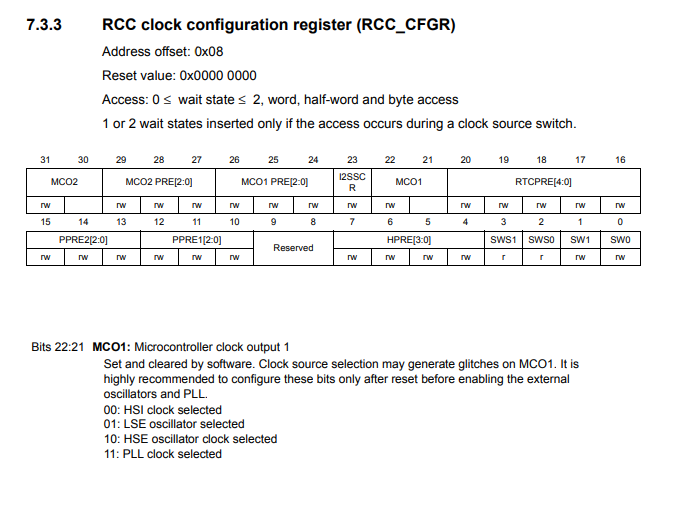
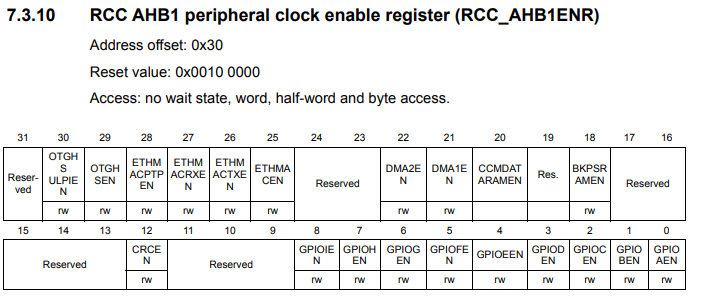
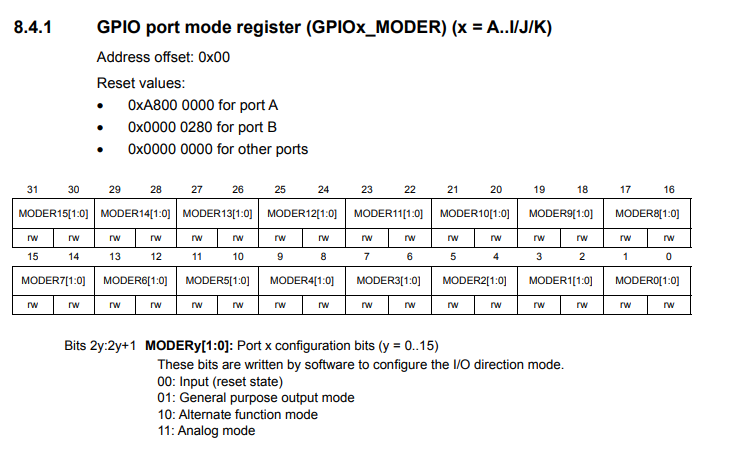
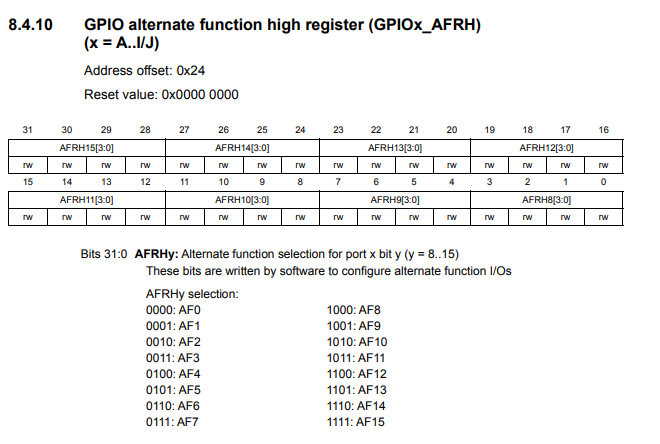
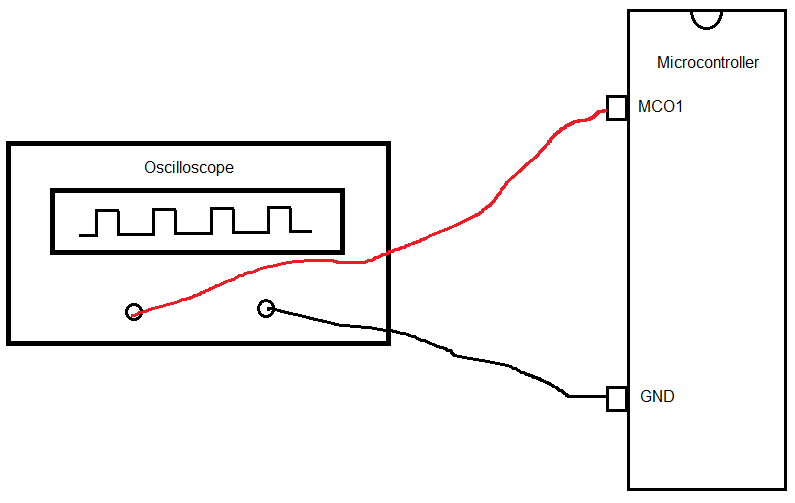
How to Clear Bits of a Number in C
